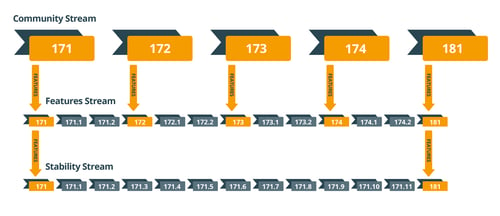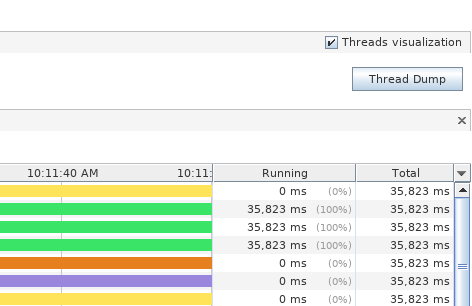Archive from May 2017
Oracle Code Prague - Impressions & Videos
Published on 30 May 2017
by Ondro Mihályi
Topics:
Java EE
|
0 Comments
At the end of April I had a pleasure to speak at the Oracle Code event in Prague.
Introducing Payara Server Streams
Published on 26 May 2017
by Mike Croft
Topics:
What's New,
Production Features,
Upgrade
|
1 Comment
In the last few weeks, we have released two builds of Payara Server; our new major version 172 and third patch build of version 171 - 171.3. This is the first time we've ever released two distinct builds in the same month, so why are we doing it?
What's New in Payara Server 172?
Published on 22 May 2017
by Michael Ranaldo
Topics:
What's New,
JMS,
Docker,
Cloud
|
7 Comments
This spring's silver lining, Payara Server 4.1.2.172, a highly cloud-focused release, is now available!
Focusing on enhancing Payara Server and Payara Micro's ease-of-use in cloud environments, we've brought in new features to make working with Docker more seamless and secure, native support for SaaS monitoring solutions and a huge increase in messaging capabilities for Payara Micro! Inside this quarter's release you will find 54 fewer bugs, a host of ecosystem and cloud improvements, and an update to match GlassFish 4.1.2. Carry on reading for a summary of this quarter's changes, or check out the full release notes for a complete list of changes.
Using the JMS Notifier with Payara Micro
Published on 18 May 2017
by Mike Croft
Topics:
JMS,
Payara Micro,
Microservices,
How-to,
Notifier
|
4 Comments
Payara Server 171 was a huge release with lots of new features and improvements on many others. We've already written about improvements to the Request Tracing service and had a guest blog about using the email notifier.
The email notifier is just one of a whole host of notifiers we now have available. A lot were added in the 171 release and more are on their way in the imminent 172 release!
Identifying Deadlocks in Thread Dumps from Payara Server
Published on 11 May 2017
by Matthew Gill
Topics:
How-to,
Admin,
JVM,
Oracle JDK
|
0 Comments
The previous part of this blog showed how to take a thread dump of Payara Server. This part will go through reading these thread dumps, particularly in regard to identifying deadlocks.
Taking a Thread Dump of Payara Server
Published on 08 May 2017
by Matthew Gill
Topics:
How-to,
Admin,
JVM,
Oracle JDK
|
1 Comment
Thread dumps are a useful tool for debugging an application that's running slowly, or is otherwise causing problems. A thread dump is a snapshot of what each running thread is doing at a particular moment. It allows you to see if a thread is running, waiting, or stalling. This two-part guide will show you how to take a thread dump of Payara Server, and how to get useful information from it.
Enhanced EJB Pool Controls in Payara Server
Published on 04 May 2017
by Lenny Primak
Topics:
What's New,
Connection Pools,
EJB
|
4 Comments
In prior releases of Payara Server, it was not possible to control the maximum number of concurrent Stateless EJB instances in Payara Server. It was, however, possible to control the number of pooled Stateless EJB instances, as well as concurrent MDB instances. These features were available in Oracle GlassFish Server 3.1 and earlier but not in the GlassFish Open Source editions (3.1.2.x and 4.x).
In the current release of Payara Server (171), it is now possible to limit concurrent Stateless EJB instances that are dispatched, allowing fine-grained control of resources, limiting surface area for DDOS attacks and making applications run more smoothly and efficiently.






